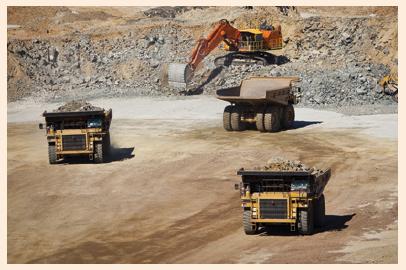In 2015, Australian mining faced a crisis. The crisis started with a cooling in the resourcehungry Chinese
Question:
In 2015, Australian mining faced a crisis. The crisis started with a cooling in the resourcehungry Chinese economy, leading to resource oversupply, which in turn lead to falling commodity prices. This meant that the margin for returns on mining investment shrunk dramatically. In addition to falls in the market price for mining commodities, a falling Australian dollar (relative to many Australian trading partner currencies) meant that profit margins for investors shrunk even further. Companies that borrowed heavily to fund the construction of mines and mining infrastructure found that their creditor banks and financial institutions were soon knocking on their door, seeking to salvage some return on their investment. Many investors lost confidence in the Australian mining industry, and so share prices in the sector fell sharply.
Some mines were closed as they were either not profitable or not profitable enough compared to other units in an organisation. Overall, mining in Australia shifted from a construction and production phase to almost production only, putting further pressure on industries or organisational units associated with mining construction.
This process of adjusting company operations is often referred to as organisational restructuring, as unprofitable or barely profitable organisational units are sold off, consolidated or closed. Financial survival of the company is often the fundamental strategic goal of the process, but managers with a shortterm survival perspective may be restructuring their company towards death rather than life. This is the case when companies divest themselves of units and operations that eventually become more profitable when economic conditions improve.
The managers and boards who took the high‐risk strategy of borrowing heavily to build mines and those who decided to incorrectly believe in an optimistic view of the industry future were often the managers and boards who were then charged with restructuring the company to survive the industry downturn. This can be a risky proposition in restructuring as sticking with the same decision‐makers and same decision processes may not lead to optimal organisational outcomes. Some Australian mining organisations called in organisational restructuring experts to help the companies get back on their feet. Often the restructuring decisions are not popular, especially when mines close, staff are made redundant and salaries may be reviewed. A restructuring that focuses on long‐term opportunities, however, and helps the company prepare for the inevitable upswing in mining activity, may help the company thrive when the golden days finally return.
QUESTION
Organisational restructuring sometimes takes place in an environment where a company sees itself as losing its competitive position as well as losing money. What do you see as the risks of restructuring in this environment as opposed to an environment where the company is financially strong?
Step by Step Answer:

Management
ISBN: 9780730329534
6th Asia Pacific Edition
Authors: Schermerhorn, John, Davidson, Paul, Factor, Aharon, Woods, Peter, Simon, Alan, McBarron, Ellen





